21 Bold Spanish Vegetarian Dishes That Sizzle With Flavor
Spanish vegetarian cuisine offers a vibrant, colorful world of culinary delights that tantalize taste buds and challenge traditional meat-based expectations.
These innovative dishes showcase the rich agricultural heritage of Spain's diverse regions.
Mediterranean influences and local ingredients transform simple vegetables into extraordinary meals bursting with flavor and nutrition.
Regional spices and cooking techniques elevate plant-based ingredients to spectacular heights of gastronomic creativity.
Passionate chefs reimagine classic recipes with modern twists that surprise and delight health-conscious food lovers.
Cultural traditions merge seamlessly with contemporary dietary preferences, creating a dynamic and exciting culinary landscape.
Spanish vegetarian cooking represents more than just food - it's an artistic expression of creativity, sustainability, and cultural pride.
Your appetite will be thoroughly awakened by these 21 fresh Spanish vegetarian dishes that promise culinary adventure:
Fresh Spanish Vegetarian Dishes Full of Color
Spain’s vegetarian fare shines with market-fresh vegetables, fragrant olive oil, and plenty of spice. Enjoy dishes that are as beautiful as they are nourishing.
Patatas Bravas
Patatas bravas are crispy potato cubes smothered in a fiery tomato sauce that defines Spanish street food culture.
Spanish bars serve these golden-brown potato chunks as a popular late-night snack across regions like Madrid and Barcelona.
Spicy sauce made from onions, garlic, chili powder, and paprika creates an explosive flavor profile that tantalizes taste buds.
Restaurants often customize the dish with additional toppings like chorizo slices or optional aioli sauce.
Authentic preparation requires careful seasoning and precise cooking techniques to achieve the signature crunch.
Spanish tapas bars consider patatas bravas a must-have menu item that celebrates simple yet intense ingredients.
Setas Al Ajillo
Setas al ajillo are succulent Spanish mushrooms sautéed in garlic-infused olive oil, creating a mouthwatering tapas dish beloved throughout Spain.
Traditional clay dishes showcase these tender mushrooms cooked until golden and aromatic.
White wine adds depth and complexity to the simmering pan, intensifying the garlic's robust flavor.
Chopped parsley provides a fresh green garnish that brightens the rich preparation.
Spanish restaurants and home kitchens frequently serve this dish as a popular appetizer or small plate.
Bread becomes essential for soaking up the flavorful, garlicky oil left behind after enjoying the mushrooms.
Olive oil serves as the critical cooking medium, ensuring each mushroom develops a perfect caramelized exterior.
Mediterranean culinary traditions shine through this simple yet spectacular dish that transforms humble ingredients into an extraordinary experience.
Escalivada
Escalivada represents a rustic Spanish vegetable dish roasted over open flames in Catalonia, featuring eggplants, bell peppers, onions, and tomatoes grilled whole until charred and tender.
Mountain farmers originally created this simple yet flavorful preparation while tending cattle in the Pyrenees region.
Spanish cooks carefully peel and seed the smoky vegetables after grilling, enhancing their natural sweetness with olive oil and salt.
Traditionally served as an appetizer or side dish, escalivada complements grilled meats and showcases the region's agricultural bounty.
The name derives from the Catalan verb "escalivar," meaning to roast over embers or in ashes.
Mediterranean culinary traditions highlight this dish's connection to rustic cooking methods.
Seasonal vegetables transform into a smoky, rich accompaniment that celebrates regional ingredients.
Pisto
Pisto represents a hearty Spanish vegetable medley originating from La Mancha, featuring a rich blend of tomatoes, onions, bell peppers, and courgettes simmered to perfection.
Moorish culinary influences shaped this classic dish, which closely resembles French ratatouille in its vegetable composition and preparation method.
Spanish home cooks prepare pisto with regional variations, sometimes adding potatoes, pumpkin, or ham to enhance its flavor profile.
Traditionally served either cold as a starter or warm as a side dish, pisto offers versatile dining options.
Regional interpretations across Spain showcase subtle differences in ingredient proportions and cooking techniques.
Ancient alboronia, the Moorish predecessor, inspired this vegetable stew's fundamental recipe.
Mediterranean ingredients and slow-cooking methods define its robust character.
Seasonal vegetables and careful preparation transform simple ingredients into a memorable Spanish culinary experience.
Berenjenas Con Miel
Berenjenas con miel are sweet-savory Spanish tapas featuring crispy fried eggplant slices drizzled with honey, originating from Andalusia's rich Moorish culinary heritage.
Typical preparation involves coating eggplant strips in flour or batter before deep-frying until golden and crisp.
Molasses from sugarcane, called miel de cana, often replaces traditional honey in Cordoba's regional version.
Medieval Arabic cooking techniques heavily influenced this unique dish's creation.
Sesame seeds frequently garnish the finished plate, adding extra texture and nutty flavor.
Spanish restaurants and home cooks prize this simple yet delicious appetizer for its unexpected taste combination.
Mediterranean ingredients and cooking methods shine through in every bite of this classic tapa.
Culinary traditions blend sweet and salty elements to create an unforgettable eating experience.
Arroz Con Huevo
Arroz con huevo represents a simple yet satisfying Latin American rice dish featuring a crispy fried egg atop steamed white rice.
Once known as "poor people food," this affordable meal now crosses socioeconomic boundaries with widespread popularity.
Caribbean versions frequently include sweet plantains alongside the rice and egg.
Spanish interpretations often incorporate a rich sofrito sauce for added depth of flavor.
Grated cheese and chopped parsley provide fresh, bright garnish to enhance the dish's taste.
Fresh ingredients elevate this humble meal from basic sustenance to a comforting, quick lunch option.
Espinacas Con Garbanzos
Espinacas con garbanzos represents a hearty vegetarian staple from Andalusia that blends tender spinach with protein-rich chickpeas in a deeply satisfying Mediterranean meal.
Spanish home kitchens have perfected this traditional recipe featuring a rich combination of aromatic spices like cumin, paprika, and garlic that infuse the ingredients with complex flavors.
Olive oil creates a smooth base for the dish, while vinegar adds a subtle tangy note that brightens the entire preparation.
Tomatoes contribute depth and richness to the spinach and chickpea mixture, creating a balanced and nutritious meal.
Cooks typically serve this warm dish during cooler months, often accompanying it with crispy fried bread for added texture.
Gazpacho
Gazpacho is a vibrant cold Spanish soup bursting with fresh vegetable flavors and Mediterranean ingredients that delivers instant refreshment during hot summer days.
Spanish laborers originally created this simple soup as a cooling midday meal for field workers, blending ripe tomatoes, cucumbers, onions, peppers, and olive oil into a smooth, tangy mixture.
Farmers' wives would prepare gazpacho to help their husbands beat the intense heat, carrying the soup in containers to provide instant relief.
Traditional recipes often include croutons and vinegar for added texture and sharp flavor.
Modern gazpacho has evolved from a humble worker's lunch to a popular summer appetizer served in restaurants throughout Spain.
Samfaina
Samfaina is a vibrant Catalan vegetable medley bursting with Mediterranean flavors and rich culinary heritage.
Spanish home kitchens celebrate this versatile dish as a harmonious blend of eggplants, tomatoes, onions, and peppers slowly simmered in olive oil.
Regional cooks often customize the recipe by roasting peppers or adding garlic for extra depth.
Traditionally served alongside cod, rice, or meat, samfaina transforms into a standalone vegetarian option with ease.
Named after the Spanish word for "symphony," the dish reflects the beautiful music created by its mixed vegetables.
Mediterranean ingredients merge into a colorful sauce that elevates simple meals.
Tombet
Tombet is a vibrant layered vegetable casserole from Mallorca featuring perfectly fried aubergines, red bell peppers, and potatoes baked into a colorful Mediterranean masterpiece.
Olive oil transforms these simple ingredients into a rich, aromatic dish that highlights regional produce and cooking techniques.
Restaurant menus across Mallorca showcase this vegetarian staple as both a standalone main course and a complementary side dish.
Skilled cooks carefully fry each vegetable before assembling the layers in a baking dish.
Ripe tomatoes, garlic, and parsley create a flavorful sauce that coats the vegetables.
Families have passed down this traditional recipe through generations, preserving its authentic preparation method.
When served, tombet resembles a rustic, crustless pie with golden-brown edges.
Mallorcans consider this dish a genuine reflection of their culinary heritage and local agricultural bounty.
Espinacas A La Catalana
Espinacas a la catalana showcases Catalonia's rustic Mediterranean culinary heritage through a simple yet flavorful spinach dish.
Spanish home cooks expertly blend blanched spinach with golden-toasted pine nuts and sweet raisins for a balanced profile.
Olive oil provides a rich base that enhances the spinach's earthy green notes.
Garlic adds subtle depth and aromatic complexity to the preparation.
Mediterranean cooking traditions shine through this straightforward vegetable preparation.
Regional ingredients like pine nuts and raisins elevate the humble spinach into a memorable side dish.
Gazpacho De Mango
Mango gazpacho is a vibrant Spanish cold soup bursting with tropical flavors and refreshing ingredients.
Spanish chefs blend ripe mangoes with crisp cucumbers, juicy tomatoes, and spicy jalapeños to create a smooth, silky mixture.
Onions, shallots, and garlic provide depth and complexity to the soup's profile.
Cold water and olive oil help achieve its signature creamy texture.
Citrus elements like orange or lime juice add essential tangy notes to balance the sweetness.
Herbs such as cilantro, basil, or tarragon enhance the gazpacho's aromatic qualities.
Chefs typically serve this chilled soup as a light summer appetizer or refreshing meal.
Mango gazpacho offers a modern twist on traditional Spanish cold soup, celebrating fresh produce and bold flavors.
Bocadillo De Verduras
Bocadillo de verduras are Spanish vegetable sandwiches bursting with colorful Mediterranean flavors and fresh seasonal ingredients.
Spanish bakers create these hearty sandwiches using traditional barra de pan or ciabatta bread sliced lengthwise and stuffed with roasted vegetables.
Zucchini, peppers, eggplants, and tomatoes form the core vegetable mix, creating a nutritious and satisfying meal.
Goat cheese or fresh cheese often enhances the sandwich's richness and adds creamy texture.
Artichokes, onions, and salad greens provide additional depth and complexity to the filling.
Some variations include salami slices, mushrooms, or eggs for extra protein.
Regional differences mean each bocadillo can feature unique local vegetable combinations.
Chefs roast vegetables to intensify their natural sweetness and create a more complex flavor profile.
Gachas
Gachas are rustic Spanish comfort fare originating from rural shepherding communities with deep historical roots in agricultural regions.
Rural workers traditionally prepared this hearty dish using simple ingredients like flour, water, salt, olive oil, and garlic.
Shepherds and farmers relied on gachas as a nutrient-dense meal during long workdays in challenging terrain.
Mediterranean cooking techniques influence its preparation methods across different Spanish provinces.
Salt and garlic provide essential flavoring that transforms basic ingredients into a satisfying meal.
Olive oil adds richness and depth to the traditional recipe.
Modern Spanish households continue preparing gachas as a connection to their agricultural heritage.
Gypsy Stew (Olla Gitana)
Gypsy stew (olla gitana) symbolizes Murcia's rustic Spanish culinary heritage with its complex vegetarian blend of seasonal ingredients and traditional cooking techniques.
Mediterranean vegetables like pumpkin, chickpeas, and green beans form this hearty stew's robust foundation.
Soft pears contribute unexpected sweetness to the savory mixture.
Sautéed onions and tomatoes create a rich base simmered with aromatic spices and vegetable stock.
Regional almonds and fried bread combine into a picada sauce that enhances the stew's depth.
Saffron and paprika add distinctive warmth and color to the dish.
Vinegar provides subtle tanginess that balances the stew's earthy flavors.
Spanish home cooks typically prepare this one-pot meal during autumn harvest seasons.
Trempo
Trempo is a simple Mallorcan summer salad celebrating fresh Mediterranean vegetables through its pure, unadorned preparation.
Mallorcan green bell peppers form the salad's distinctive base, complemented by ripe tomatoes and crisp onions.
Locals chop these ingredients into small, uniform pieces to maximize flavor and texture.
Salt and high-quality olive oil are the only seasonings, allowing vegetable freshness to shine.
Cooks traditionally prepare trempo as a light side dish during hot summer months.
Village gatherings and family meals often feature this uncomplicated salad.
Regional farmers' markets provide the ideal ingredients for an authentic trempo.
Spanish culinary traditions honor simplicity through this unpretentious vegetable mixture.
Fried Sorrel (Acederas Rehogadas)
Fried sorrel are tangy green leaves sautéed in olive oil with garlic, creating a zesty Spanish side dish popular in rural regions.
Cooks boil sorrel leaves first to reduce bitterness before chopping them into smaller pieces.
Garlic provides a rich aromatic base by browning quickly in hot olive oil.
White wine vinegar adds sharp brightness to balance sorrel's natural acidity.
Spanish home kitchens frequently prepare this simple vegetable preparation as a complementary accompaniment to main dishes.
Mediterranean culinary traditions value these simple vegetable preparations that maximize fresh ingredient flavors.
Rustic cooking methods highlight sorrel's unique lemony taste profile.
Swiss Chard And Tomatoes (Acelgas Con Tomate)
Acelgas con tomate are succulent Spanish vegetable medley highlighting Swiss chard's earthy flavors through a simple Mediterranean cooking technique.
Spanish home kitchens frequently prepare this rustic side dish by boiling Swiss chard until tender and perfectly soft.
Ripe chopped tomatoes create a bright sauce that complements the leafy greens' natural richness.
Olive oil adds depth while onions provide subtle sweetness to the vegetable blend.
Herbs like thyme and parsley enhance the dish's aromatic profile with traditional seasoning.
Salt and a touch of sugar balance the tomatoes' acidity and vegetable's natural taste.
Cooks typically drain the Swiss chard after boiling to ensure a perfect texture.
Mediterranean culinary traditions inspire this straightforward yet flavorful vegetable side dish that celebrates fresh, seasonal ingredients.
Mojete Manchego
Mojete manchego are rustic roasted vegetable salads from Spain's La Mancha region, featuring intensely charred bell peppers, garlic, and small onions transformed by a zesty dressing of lemon juice, olive oil, and cumin.
Regional farmers traditionally prepared this dish directly in agricultural fields, using open fires to roast vegetables and create robust flavors.
Blended garlic and citrus juice form a vibrant base for the salad, which marinates chopped roasted vegetables.
Black olives add a salty contrast to the sweet peppers.
Each ingredient contributes to a balanced, simple Mediterranean dish.
Olive oil drizzled on top enhances the salad's rich texture.
Seasonal vegetables and minimal processing make mojete manchego a pure expression of Spanish countryside cooking.
Alcauciles Fritos
Alcauciles fritos are crispy Spanish artichoke fritters from Cadiz that transform humble vegetables into a golden, irresistible appetizer.
Small artichoke hearts get trimmed, seasoned with sea salt, and quickly fried in hot oil until edges turn delicately brown and crisp.
Spanish cooks carefully select young, tender artichokes for maximum flavor and texture.
Lemon juice adds a bright, tangy accent that cuts through the rich, deep-fried crunch.
Restaurant and home kitchens throughout southern Spain prepare this simple yet elegant dish as a popular tapas option.
Regional white wines from Sanlucar complement the artichokes' earthy taste perfectly.
Restaurants often serve these fritters with additional lemon wedges for squeezing.
Mediterranean culinary traditions shine through this straightforward, satisfying snack.
Oliaigua
Oliaigua is a rustic Menorcan soup highlighting Mediterranean simplicity through its minimalist ingredients and farmer-friendly preparation.
Spanish islanders traditionally crafted this nutritious dish using basic pantry staples like onions, garlic, green peppers, and tomatoes slowly simmered in water and olive oil.
Farmers originally consumed oliaigua as a hearty morning meal, breaking stale bread into the warm broth for added substance.
Menorca's agricultural workers developed this economical recipe to maximize limited resources while providing essential sustenance during long workdays.
Olive oil and water form the soup's linguistic root, with "oli" meaning oil and "aigua" signifying water in the local dialect.
Regional ingredients create a light yet satisfying texture that reflects Balearic culinary traditions.
What Pantry Staples Are Used in Spanish Vegetarian Cooking?
Spanish vegetarian cooking relies on a rich array of pantry staples that highlight fresh, bold flavors and hearty textures:
Are Spanish Vegetarian Dishes Considered Authentic or Modern Adaptations?
Many Spanish vegetarian dishes are deeply authentic, rooted in traditional regional cuisines that have long emphasized vegetables, legumes, and grains.
Classic recipes like pisto (ratatouille-like vegetable stew), escalivada (roasted vegetables), and tortilla de patatas (potato omelet) showcase the importance of plant-based foods in Spanish cooking.
That said, modern adaptations also thrive, especially as vegetarianism and veganism grow. Chefs creatively reimagine traditional flavors with contemporary techniques, introducing new vegetarian dishes while honoring Spanish culinary heritage.

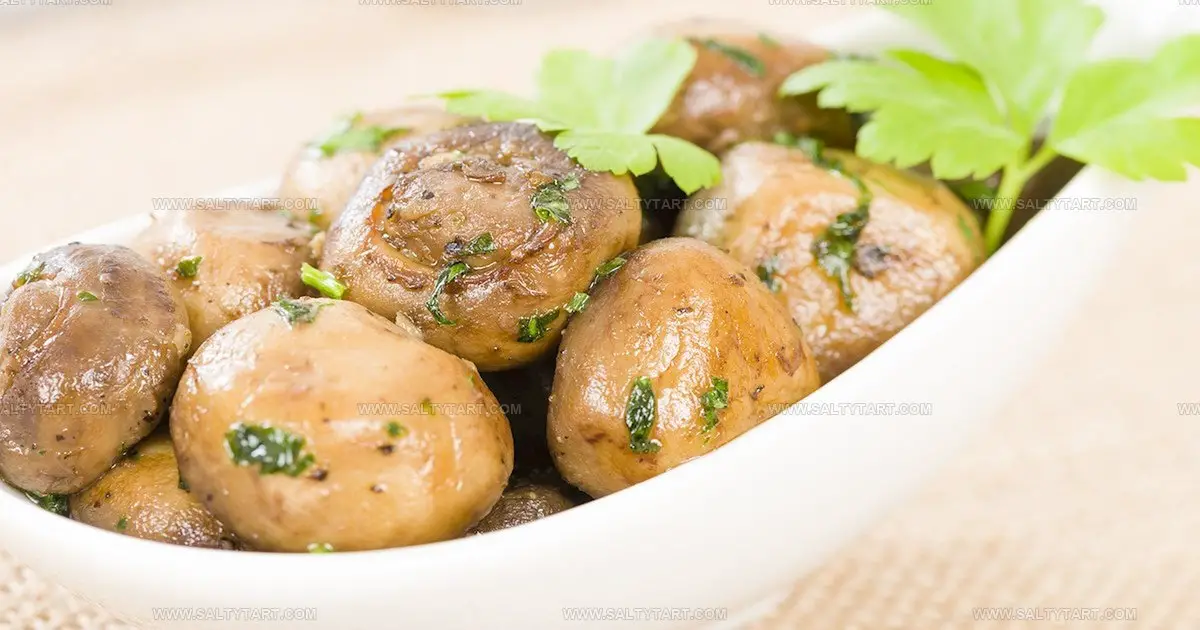

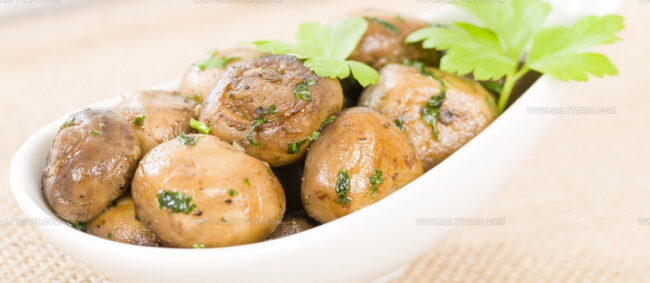
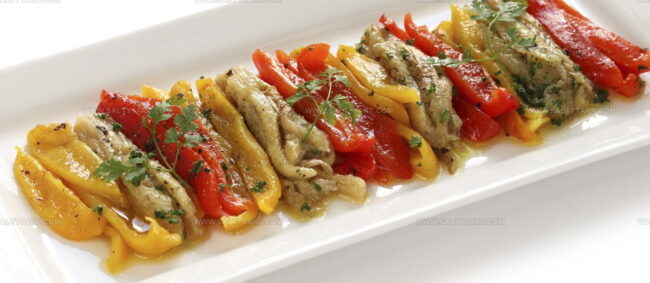
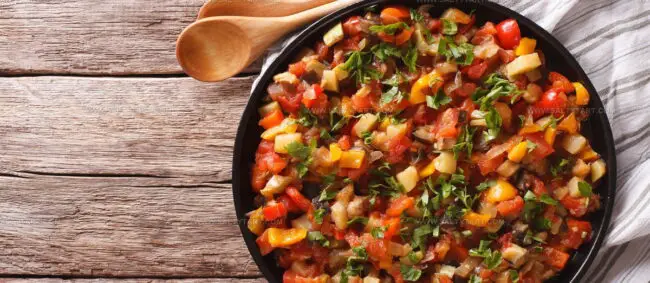


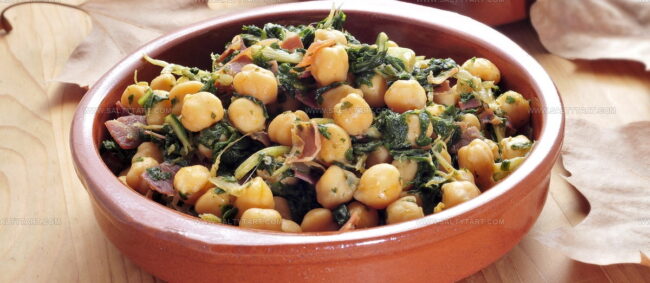

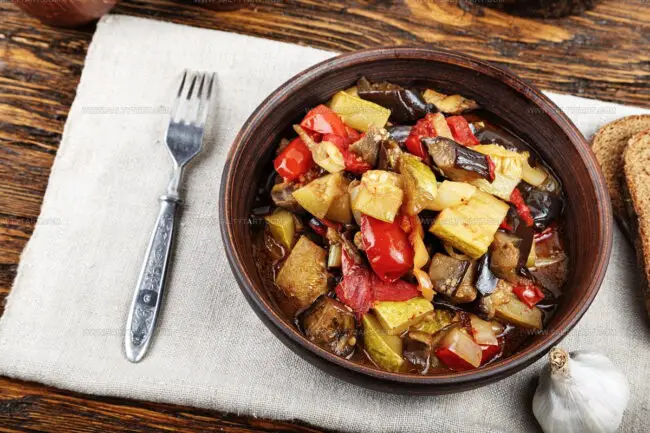
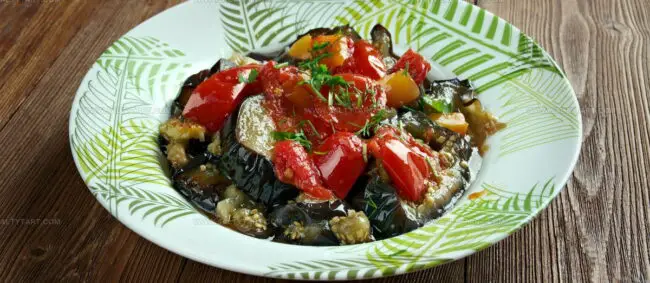
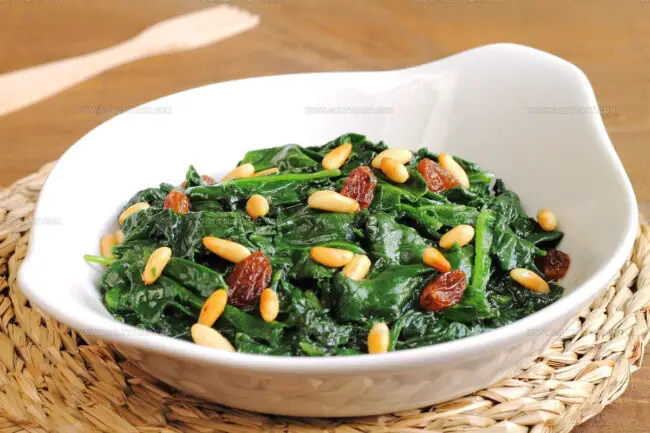


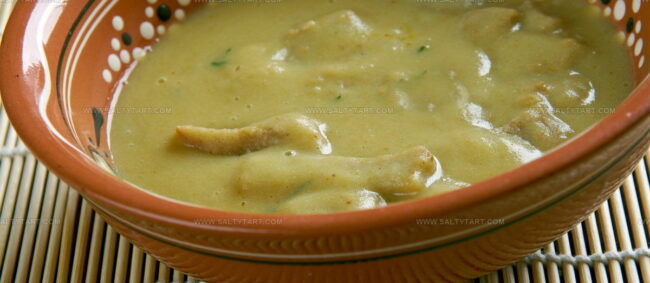
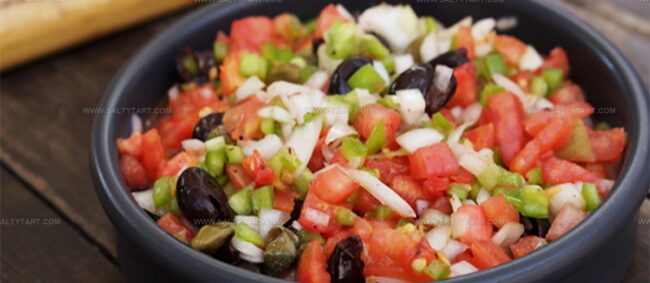
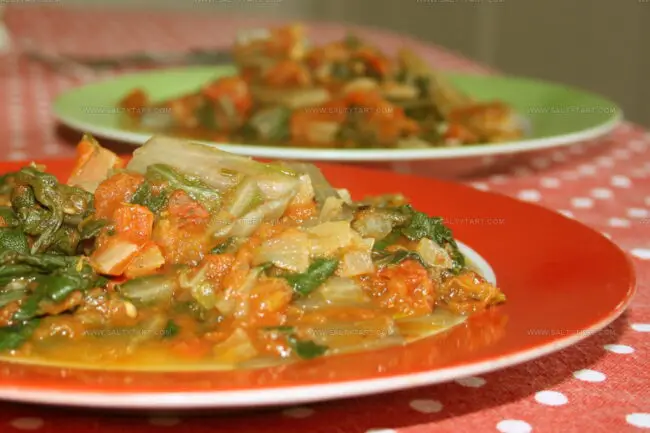
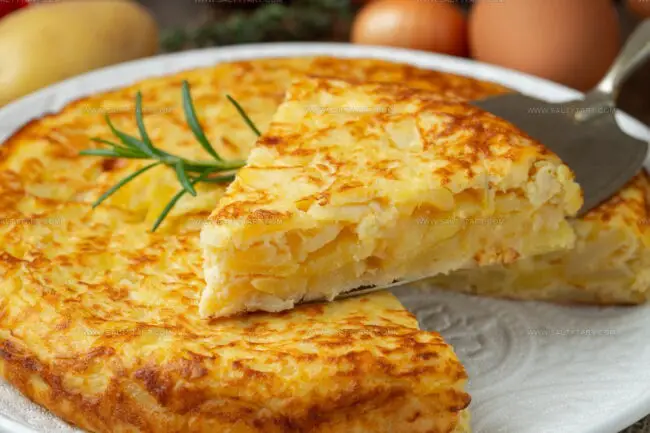
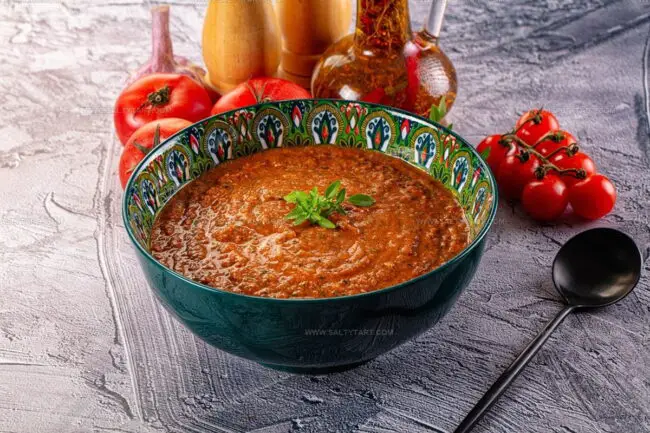
Jess Martinez
Contributing Recipe Writer & Nutrition Consultant
Expertise
Southwestern and Latin American cooking, Nutritional analysis and healthy recipe planning, Cultural food traditions, Modifying traditional dishes for better health
Education
Santa Fe Community College
Certificate in Culinary Arts
Focused on mastering the flavors and cooking methods of traditional Southwestern cuisine.
Jess’s love for bold, homegrown flavors led her straight into the world of Southwestern cooking and cultural nutrition.
After completing her Certificate in Culinary Arts at Santa Fe Community College, she made it her mission to show that good-for-you food can still taste incredible.
At saltytart.com, Jess shares vibrant, health-conscious recipes with roots in tradition but a fresh, modern twist. When she’s not testing new recipes, you’ll find her at local growers’ markets, tending her herb garden, or digging into food history books.